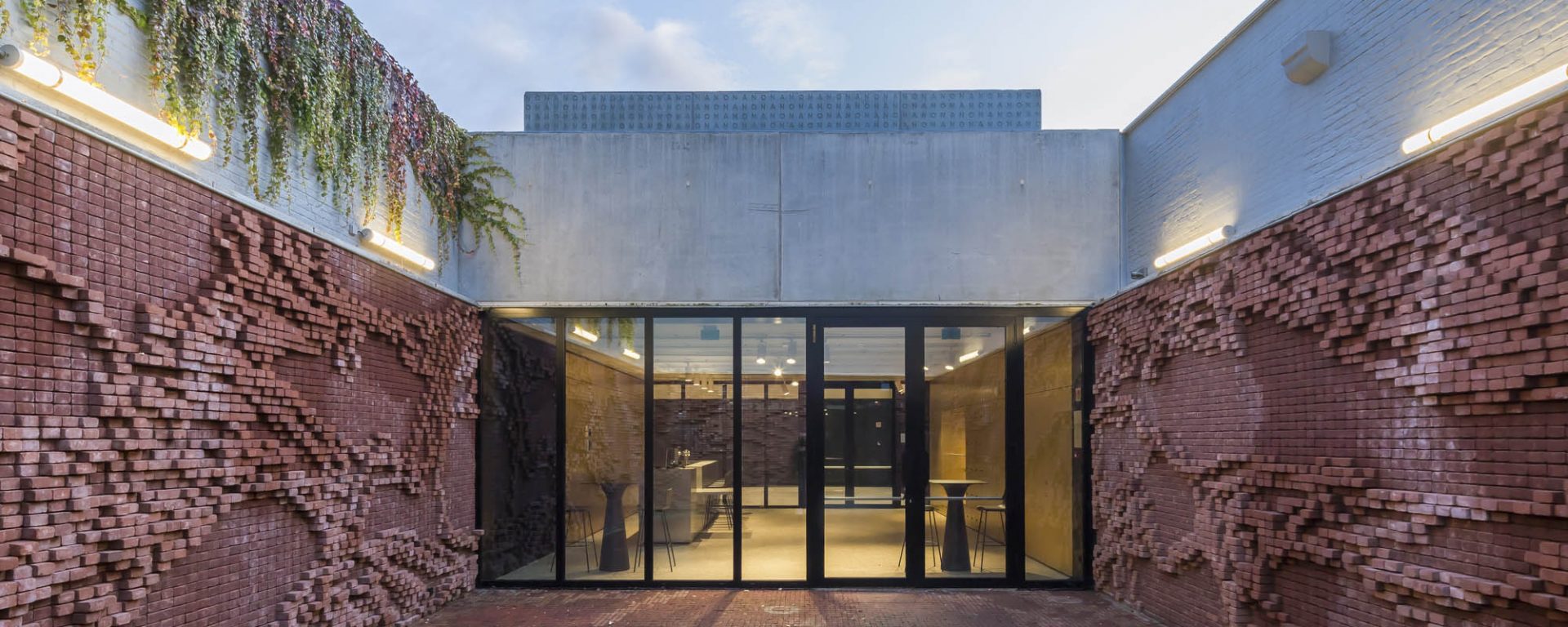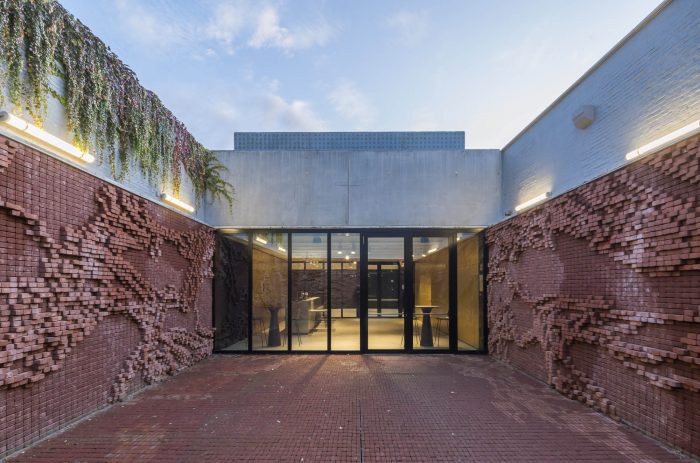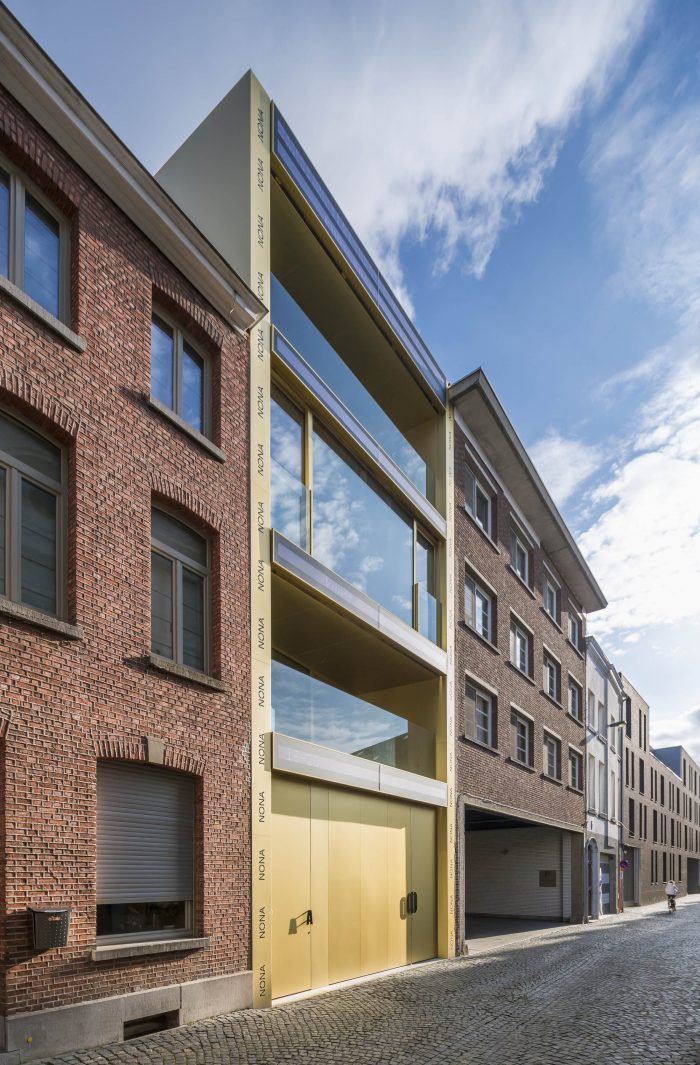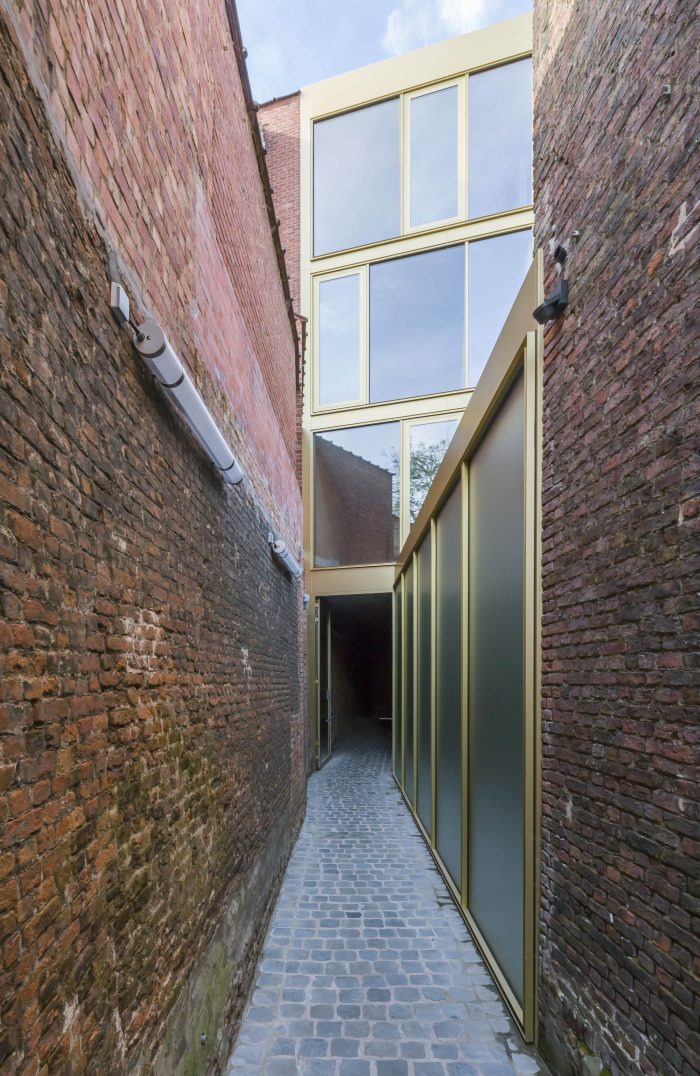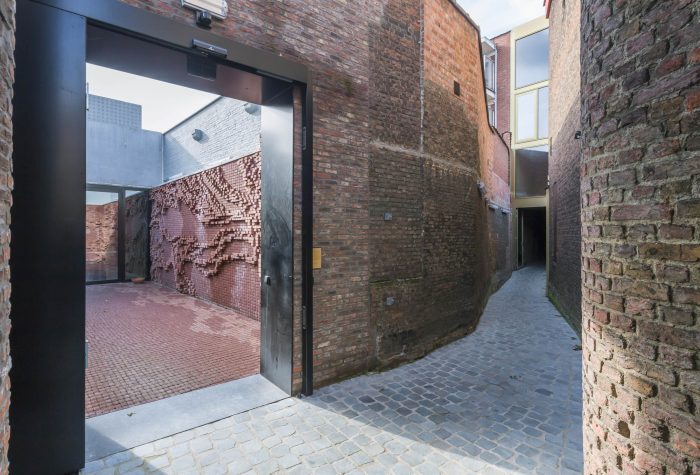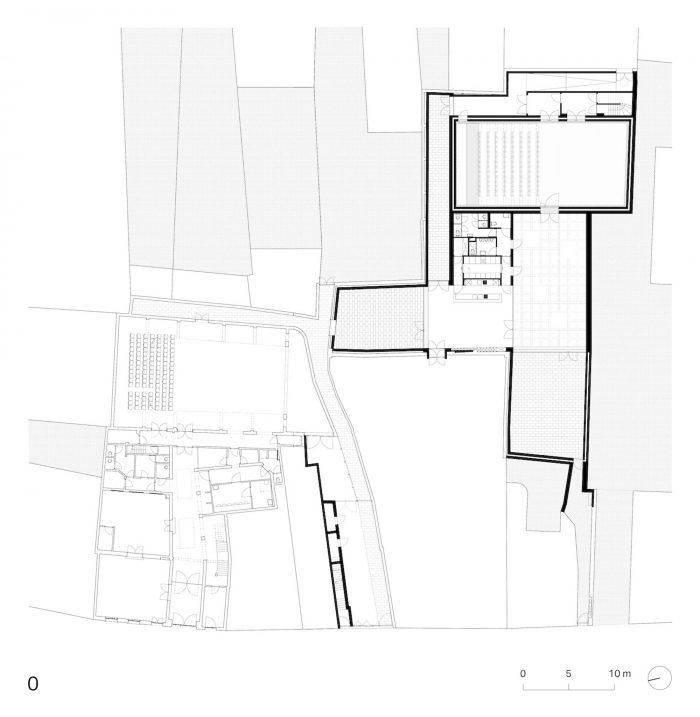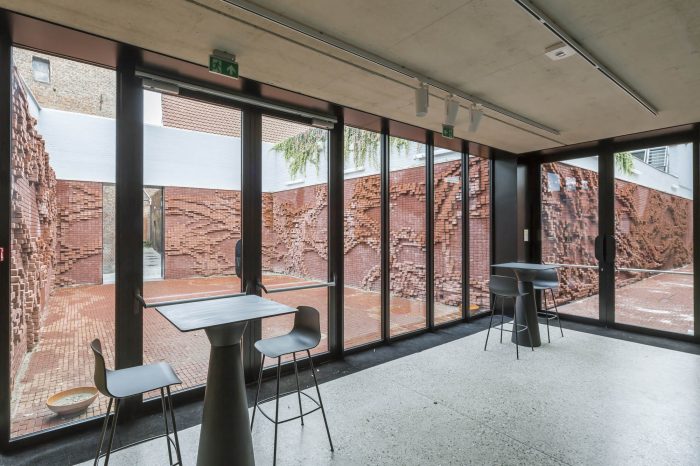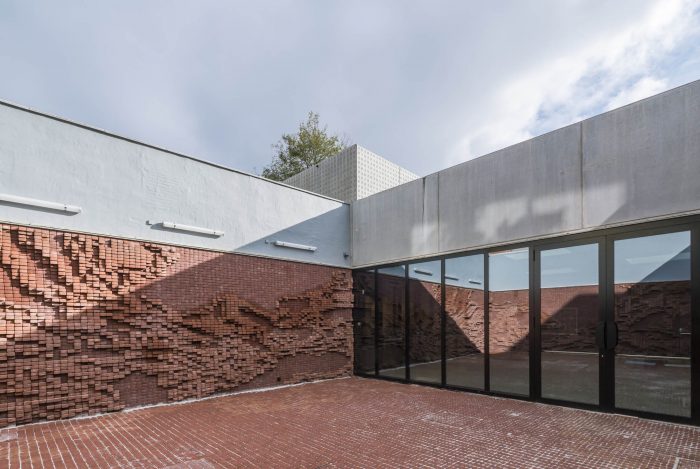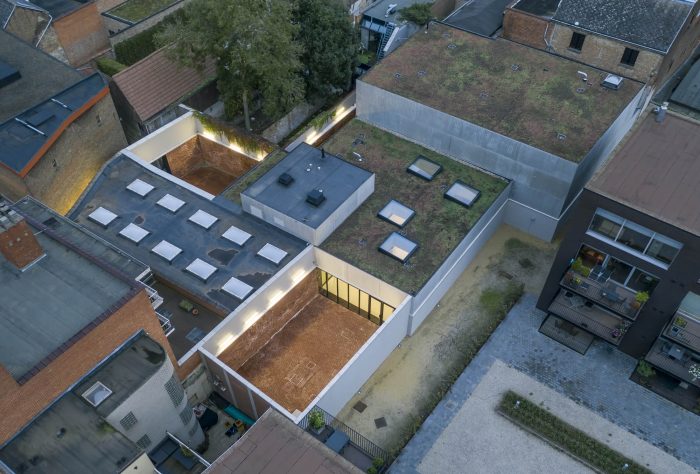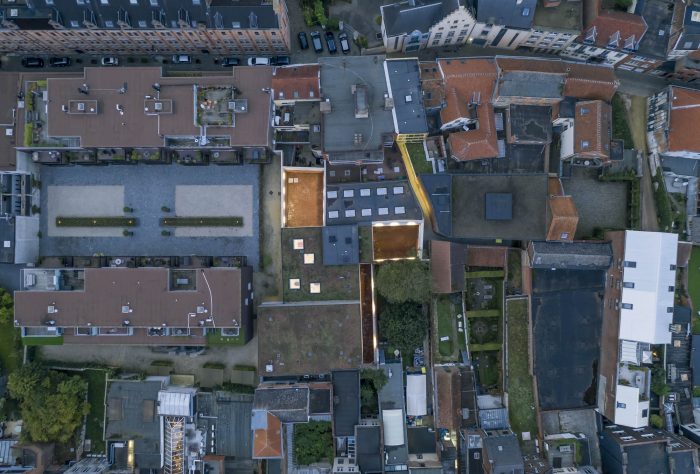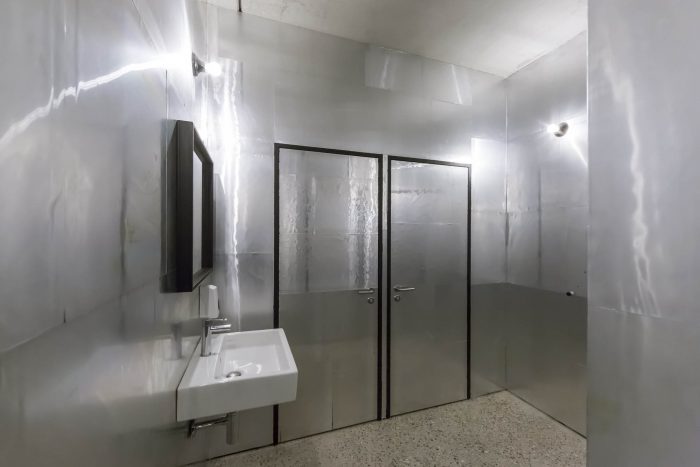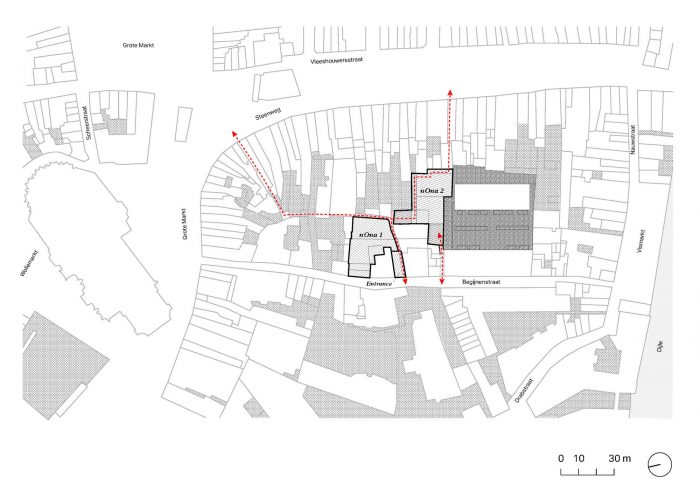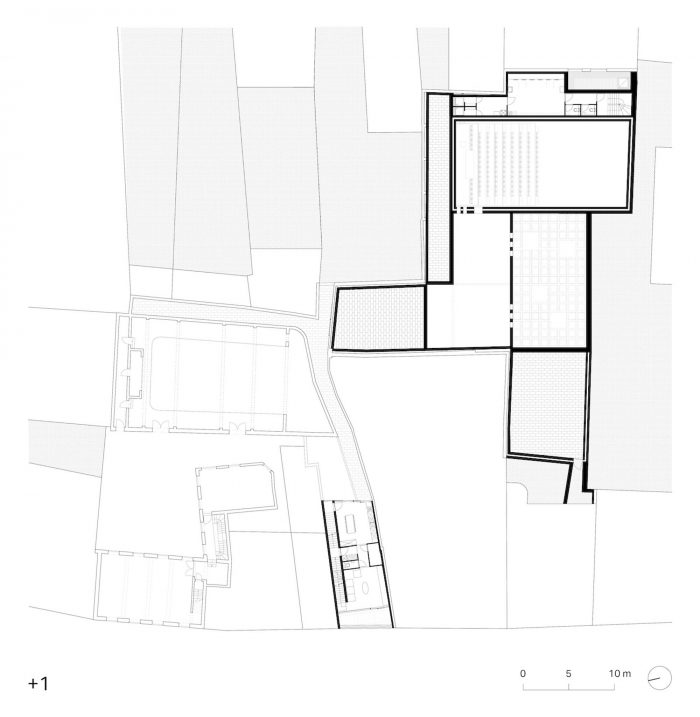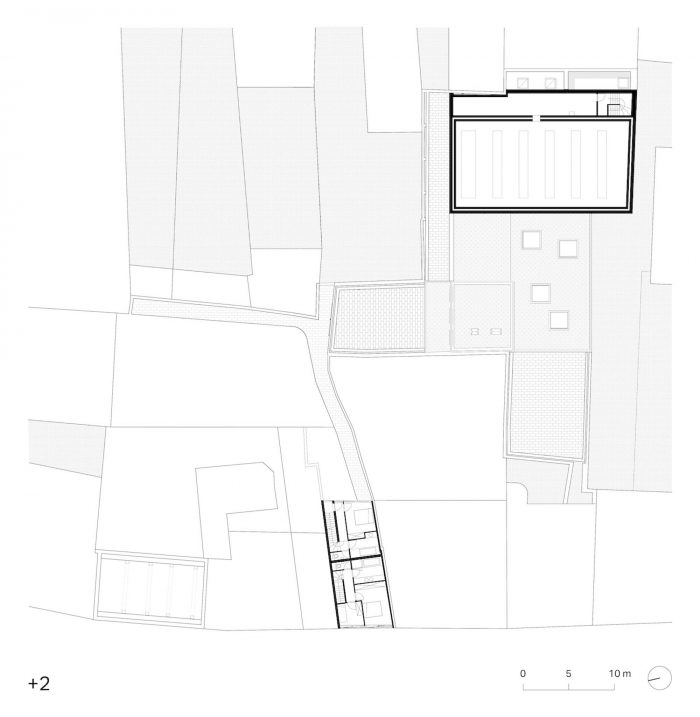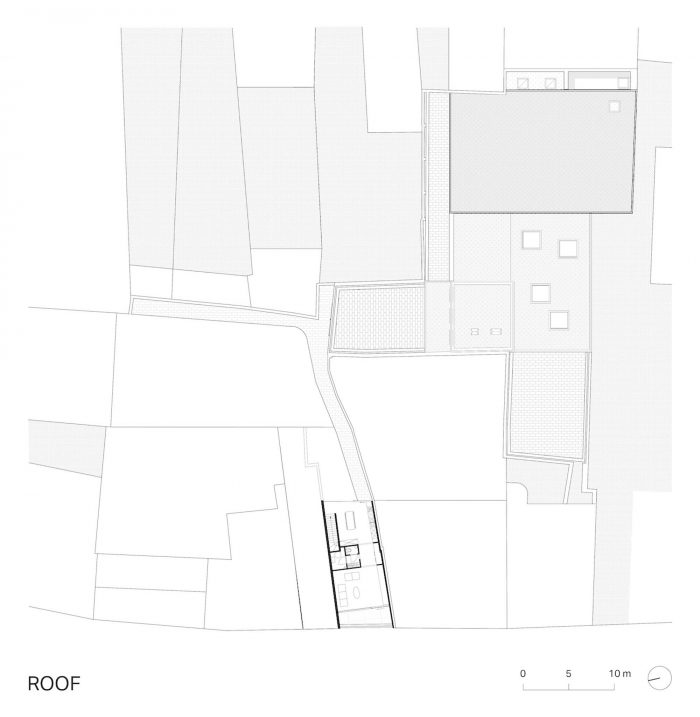大约二十年前,梅赫伦的nOna艺术中心因空间不足而苦恼。现有的装饰艺术剧院大厅有其局限性,已经不能满足其灵活性。1999年,他们萌生了在相邻的印刷厂地块上建造第二个剧场大厅的想法。同时,印刷厂被改造成三个临时排练室,供有需要的艺术家使用,称为nOva。2016年,艺术中心nOna的扩建工程开始实际改造和建设。该项目符合梅赫伦市的城市规划,以促进大广场和会议中心Lamot之间的文化轴。该地块位于一个街区的中间,一条中世纪的小巷将新旧地块完全分开。新的扩展部分通过内部和外部房间的继承,嵌入到城市结构中,并具有各自的物质性和氛围。
About twenty years ago arts center nOna in Mechelen suffered from a lack of space. The existing Art-deco theatre hall had its limits and was no longer sufficient in terms of flexibility. In 1999 they had the idea to build a second theatre hall on the adjacent printing business site. In the meantime, the printing factory was transformed into three temporary rehearsal rooms for artists in need, called nOva. In 2016 the actual renovation and building of the extension of arts centre nOna started. The project fits in the urban planning of the city of Mechelen to boost the cultural axis between the Grand Place and the congress center Lamot. The site is situated in the middle of a block with a medieval alley that literally separates the new and old site. The new extension got embedded in the urban fabric by the succession of interior and exterior rooms with their own materiality and atmosphere.
这样,新的场地利用了地块的反复无常的形式,并回应了花园墙和棚子的拼凑。三个天井作为城市的 “房间 “被创造出来,围绕着新的剧院大厅和论坛,这是一个多功能的空间,就像一个有盖的市场大厅。第一个天井位于小巷和接待处之间,连接了Begijnenstraat和内部区域。大天井是论坛的延伸,而长天井则是通往后面的艺术家门厅的通道。宽大的开口模糊了室内和室外的界限。
This way the new site capitalizes on the capricious form of the plot and responds to the patchwork of garden walls and sheds. Three patios as urban ‘rooms’ were created around the new theatre hall and the forum, multifunctional space with the allure of a covered market hall. The first patio located between the alley and the reception connects the Begijnenstraat with the inner area. The large patio is an extension of the forum and the long patio gives access to the artists’ foyer at the back. The wide openings blur the boundary between inside and outside.
外部天井是与艺术家Nick Ervinck合作,以 “运动中的砖块 “为概念设计的。新的大厅现在是一个多功能的混凝土盒子,混凝土外墙刻有N O N A,显然是指艺术中心的名字,但也让人想起了以前的印刷厂。剧院大厅按照箱中箱的概念建造,以满足建筑的声学要求。街边的新建筑将nOna视觉化,作为通往内部区域的大门,并将新场地与现有的剧场大厅连接起来。
The exterior patios were created in collaboration with artist Nick Ervinck with the concept ‘brick in motion’. The new hall is now a multifunctional concrete box of which the concrete facade is engraved with N O N A, obviously referring to the name of the arts center, but also reminiscing about the former printing factory. The theatre hall is constructed according to the box-in-a-box concept to meet the acoustic requirements of the building. The new building at the street side visualizes nOna, serves as a gate to the inner area, and connects the new site with the existing theatre hall.
艺术中心nOna通过玻璃幕墙与城市互动。LED屏幕显示了艺术中心的节目,为街道注入了活力,并邀请路人前来参观。例如,nOna是比荷卢地区第一座使用 “绿色”(或圆形)混凝土建造的建筑,以前印刷业的旧印刷板被重新用于卫生墙的装饰。然而,可持续发展首先要从良好的城市规划和周密的空间规划开始。中世纪的小巷,是项目的骨干,通过恢复中世纪的小巷网络来增加大型建筑群的可达性,是项目的动力因素。
Arts center nOna interacts with the city through the glass facade. LED screens display the programming of the arts centre, animate the street and invite passers-by. In terms of sustainability, efforts were made at various levels. nOna is for instance the first building in the Benelux to be built in ‘green’ (or circular) concrete and old printing plates of the former printing business were reused for the finishing of the sanitary walls. However, sustainability starts in the first place with good urban planning and thoughtful spatial planning. The medieval alley, the backbone of the project, was the motivation factor to increase the accessibility of the large building block by restoring the network of medieval alleys.
原印刷厂的场地被清理出来,改造成一个新的艺术中心,其内部和外部的房间参照了以前印刷业的城市形态。多条小巷将艺术中心与街道连接起来。在20年的建设过程中,重点在于参与,与邻居、城市、非营利组织和学校进行了可持续的合作。与邻居们的各种会议使现场工作和志愿服务变得愉快。
The former printing factory site was cleared out and transformed into a new art center of which the interior and exterior rooms refer to the former urban morphology of the printing business. Various alleys connect the arts center with the street. During the 20-year building process, the focus was on participation and sustainable collaborations were made with the neighbours, the city, non-profit organizations, and schools. Various meetings with the neighbours resulted in pleasant site work and volunteering.
非营利组织Onbetaalbaar通过制作二维码,讲述他们在建设过程中的记忆,让每一位员工都成为焦点。在建设过程中,摄影师Kaat Pype为参展的工人们拍摄了照片。Onbetaalbaar还设立了一个社会就业项目,最终形成了独特的门把手。比利时的公共建筑有义务将建筑预算的1%用于艺术。DMVA超越了这一点,将艺术视为建筑。艺术家Nick Ervinck用他的作品ANONOV接受了这一意图,该作品在建筑的外部天井中执行。
Non-profit organization Onbetaalbaar put a spotlight on every staff member through the creation of QR codes that tell their memories of the building process. During the building process, photographer Kaat Pype took pictures of the workers who were exhibited. Onbetaalbaar also set up a social employment project that resulted in unique door handles. Public buildings in Belgium are obliged to use 1 percent of the building budget for art. dmvA transcends this by considering the art as the building. Artist Nick Ervinck embraced this intention with his work ANONOV which is executed in the exterior patios of the building.
建筑师:DMVA
占地面积:720 m²
年份:2020年
摄影:Sergio Pirrone
艺术家:Nick Ervinck
结构工程师:Util struktuurstudies
技术:Technum – Tractebel Engineering
声学顾问:Technum – Tractebel Engineering
承包商:Willems & co
暖通顾问:Keysers
照明设计公司:Modular
城市:马利纳斯
国家:比利时
Architects: dmvA
Area: 720 m²
Year: 2020
Photographs: Sergio Pirrone
Artist Brick Artwork:Nick Ervinck
Structure Engineers:Util struktuurstudies
Techniques:Technum – Tractebel Engineering
Acoustics Consultants:Technum – Tractebel Engineering
Contractor:Willems & co
Hvac Consultants:Keysers
Lighting Designers:Modular
City:Malinas
Country:Belgium

